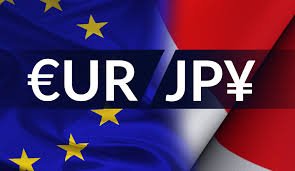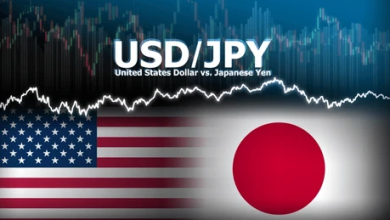Japanese Yen Sees a Sell-Off Ahead of Rate Decision

The Bank of Japan (BoJ) commenced its two-day meeting today to discuss potential changes in monetary policy, although no changes are expected for this particular session. Nevertheless, further communication will be crucial, and investors will be paying close attention to the words of Ueda, the head of the Bank of Japan. What will the BoJ’s decision bring, and how will it affect the further trading of the yen, which has been clearly sold off recently?
Maintaining Interest Rates, but with a Hawkish Tone
It is expected that the BoJ will maintain the key interest rate at 0.5%. It is worth mentioning that the bank raised interest rates in January, but there was clear communication about this move beforehand. Currently, the focus is on the communication from BoJ head Kazuo Ueda, who may begin preparing markets for another rate hike. Economists’ forecasts indicate that the next BoJ move may come as early as May 1st. Currently, none of the economists surveyed by Bloomberg expect a rate hike. Market indications also do not suggest this.
There should be no hike tomorrow, as this has not been clearly communicated by the bank. Nevertheless, a clear announcement regarding the next May meeting could change the fortunes of the recently sold-off yen. Source: Bloomberg Finance LP
Rising Inflationary Pressure
A key factor influencing the BoJ’s decisions is the rising inflationary pressure. Preliminary results from the spring wage negotiations (shunto) indicate another year of solid wage increases. While last year’s negotiations concluded with a 5.1% wage increase, current indications suggest that increases could reach 5.46%. In January, CPI inflation rose to 4%, signaling that the years of deflation and disinflation may be a thing of the past.
1% Target for Interest Rates?
Investors will also be closely analyzing any indications regarding the target level of interest rates. There is speculation that the BoJ may aim to reach 1% in the short term. Such a move would aim to both combat inflation and stabilize the yen’s exchange rate. Bloomberg Economics predicts reaching the 1% level in July. A Bloomberg survey (median) indicates one rate hike in September, which is also indicated by the interest rate futures market.
Lesson from Last Year’s Turbulence
The BoJ must act cautiously to avoid sharp market reactions. Last year’s turbulence in the yen market, following the July rate hike, showed how sensitive markets are to the central bank’s communication. The yen has been gaining recently due to capital flows to safe havens, but it has started to lose ground in the last few sessions. Currently, USDJPY is at its highest level since March 5th.
Recently, long positions on the yen have increased to their highest levels in history, while short positions have fallen to extremely low levels from the perspective of recent months. Source: Bloomberg Finance LP, XTB
USDJPY has experienced a clear rebound since March 11th, but important resistance levels are currently being tested, such as the 50.0 Fibonacci retracement of the last upward wave, the downtrend line, and the range of the largest correction in the last downward impulse. Moreover, the 50-period moving average is also nearby. If the BoJ appears hawkish, the yen may return to gains. However, if the BoJ communicates caution (although there is no pretext for this), the pair could rebound to around 151. Source: xStation5
The material on this page does not constitute financial advice and does not take into account your level of understanding, investment objectives, financial situation or any other specific needs. All information provided, including opinions, market research, mathematical results and technical analyzes published on the Website or transmitted To you by other means, it is provided for information purposes only and should in no way be construed as an offer or solicitation for a transaction in any financial instrument, nor should the information provided be construed as advice of a legal or financial nature on which any investment decisions you make should be based exclusively To your level of understanding, investment objectives, financial situation, or other specific needs, any decision to act on the information published on the Website or sent to you by other means is entirely at your own risk if you In doubt or unsure about your understanding of a particular product, instrument, service or transaction, you should seek professional or legal advice before trading. Investing in CFDs carries a high level of risk, as they are leveraged products and have small movements Often the market can result in much larger movements in the value of your investment, and this can work against you or in your favor. Please ensure you fully understand the risks involved, taking into account investments objectives and level of experience, before trading and, if necessary, seek independent advice.





